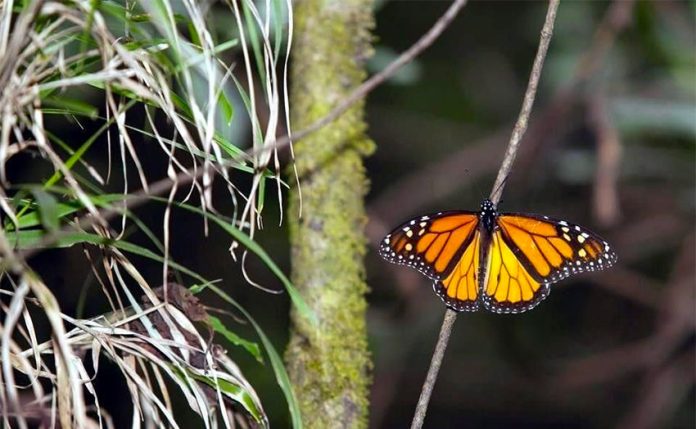Degradation of the forest has diminished by over 25% in the Monarch Butterfly Biosphere Reserve compared to the 2017-2018 season, says the World Wildlife Fund (WWF).
Forest degradation in 2018-2019 decreased to five hectares from 6.7 in the previous season.
“Forest degradation decreased due to the reduction of large-scale illegal logging,” said WWF Mexico director Jorge Rickards in a statement. “Nor were there serious storms like those that affected the reserve in 2016.”
Illegal logging discovered on 1.43 hectares last year declined to only 0.43 hectares.
“We’ve been able to conserve the core area thanks to the pledge made with neighboring communal lands, indigenous communities and the brigades, who are paid to keep watch on the forests . . . We also create economic opportunities so that the reserve can be a source of . . . development for people.”
Drought was one of the primary causes of forest loss documented in the reserve, according to monitoring carried out by the WWF-Telmex Telcel Foundation Alliance, the Natural Protected Areas Commission (Conanp) and the Institute of Biology at the National Autonomous University (UNAM).
Conanp has taken 1,280 tactical actions to counter illegal logging in the area with the aid of surveillance by the National Guard.
Telcel’s head of marketing and social responsibility, Sergio Patgher, said the alliance has planted millions of trees in 13,501 hectares of monarch hibernation areas since 2003. The project has utilized 13 local nurseries, generated 300 jobs and created a network of 32 mushroom nurseries in the region.
“The involvement of society is important . . . . In July 2019, thanks to the support of over 1,000 volunteers from Telcel and WWF and families from Puebla, Querétaro, Guadalajara, Morelia, León and Mexico City, we planted 15 million oyamel fir trees in the Monarch Butterfly Reserve, as part of the public awareness campaigns carried out by the alliance,” Patgher said.
In addition to the conservation actions, the alliance has planted flower gardens along the butterflies’ migration routes in Chihuahua, Mérida, Morelia, Hermosillo, Monterrey and Tijuana.
The 56,000-hectare reserve is home to 132 bird, 56 mammal, 432 plant and 211 fungus species, and the basins of the region filter water into the Cutzamala water system for over 4.1 million people in Mexico City and the metropolitan area.
It borders the states of México and Michoacán and lies 100 kilometers northwest of Mexico City.
Historically high levels of illegal logging in Mexico have been a major threat to the survival of the monarch butterflies. Another has been the loss of reproductive habitat in the United States due to land-use changes and the use of pesticides to kill milkweed, on which the butterfly lays its eggs.
Source: Reforma (sp)
